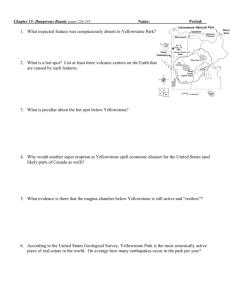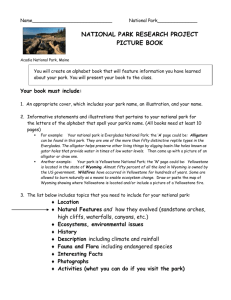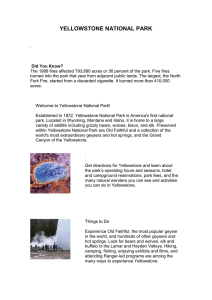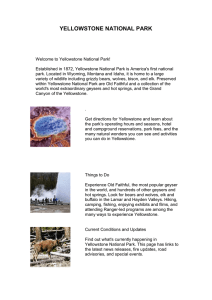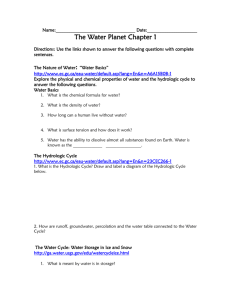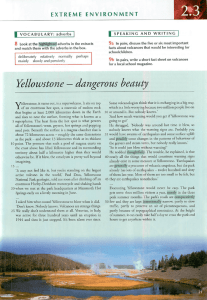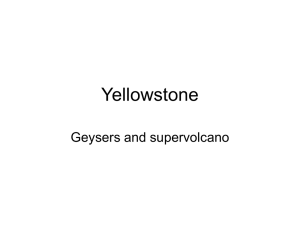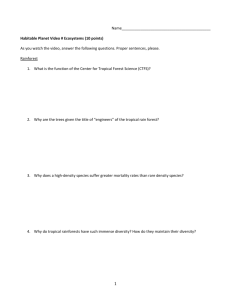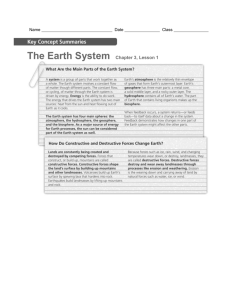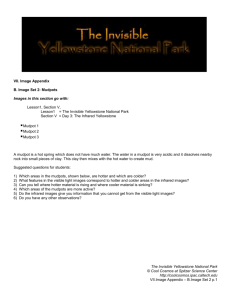Summer of FIRE
advertisement
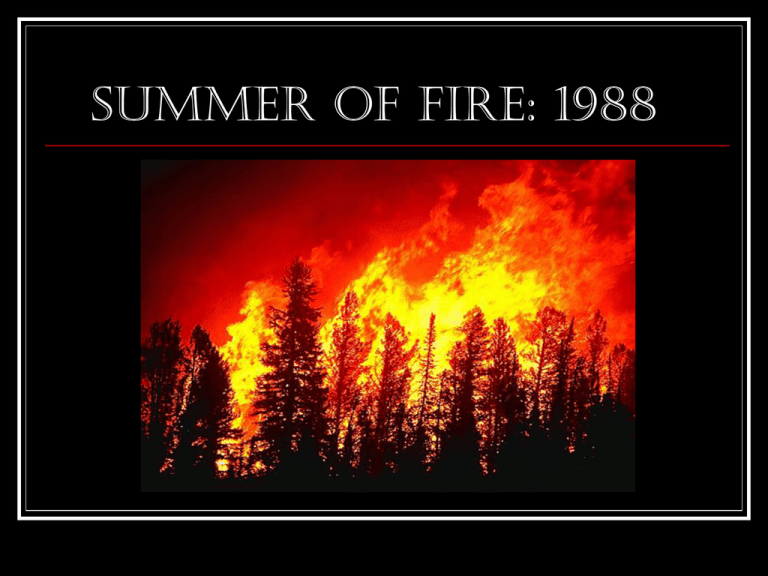
Summer of FIRE: 1988 Yellowstone National Park What’s so hot about Yellowstone? Yellowstone has more geysers, hot springs and other geothermal areas than any other place in the world! Some of Yellowstone’s Natural Wonders: Mud Pots and Geysers Yellowstone has a plethora of incredible wildlife, such as Wolves… ….Bison… …Elk…. And Grizzly Bears! Yellowstone’s landscape Yellowstone encompasses over 2.2 million acres! Beyond the thermal pools, there are acres of evergreen trees, a mighty canyon, lakes, waterfalls, and rivers. What happened in the summer of 1988? Severe drought plagued much of the United States, including the area around Yellowstone. When lightening struck in June, the land was so dry, a fire began quickly and easily. Park policy was to allow fires to burn. WHY DO YOU THINK THIS WAS POLICY? Park Fire Policy If a forest fire does not threaten people or property, then it is allowed to burn. This is because fire can actually help the environment. It allows for regeneration and new growth in forests. Not your typical summer Most summers in Yellowstone see plenty of rain. Park officials did not anticipate that the fire would not be naturally controlled by precipitation! When it was all over… Rain and snow finally stopped the advance of the fire in September. Over 793,000 acres were burned. About 300 large mammals perished. Legacy of the Fire Slowly the forest comes to life again! Interesting Facts The summer of 1988 was the driest in the Park's recorded history. $120 million was spent and 25,000 people participated in this firefighting effort, the largest in U.S. history. This huge effort saved human life and property, but had little impact on the fires themselves. Vocabulary Geyser Veered Canopy Tinder Dwindled Embers Policy Geyser A natural spring that shoots up a fountain of hot water or steam Webcam of Old Faithful Geyser Veered Shifted or changed direction As the wind veered, the Mayflower drifted north toward Plymouth. Canopy Any covering overhead, such as a tree Tinder Anything dry that will easily catch fire on contact with a spark Dwindled Became Steadily smaller or less: shrank Embers Something no longer in flames by still glowing Policy A plan or method of action or conduct If a forest fire does not threaten people or property, then it is allowed to burn. This is because fire can actually help the environment. It allows for regeneration and new growth in forests. Grammar: Pronouns and Antecedents Pronoun Clubhouse Mixed up Pronouns Graphic Aids and Text Structure Test Tutor

